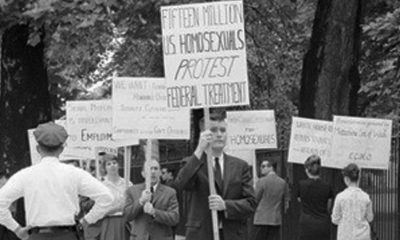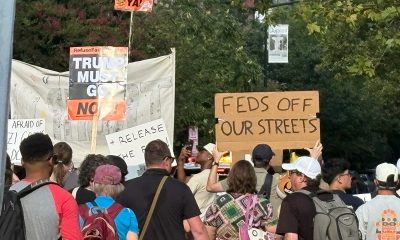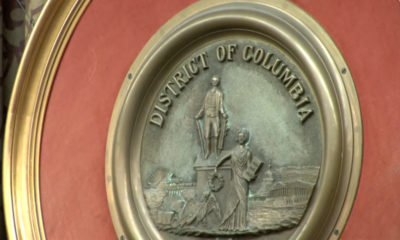a&e features
Why do so many gay couples open up their relationships?
Many of us are on autopilot, but we can build more meaningful connections
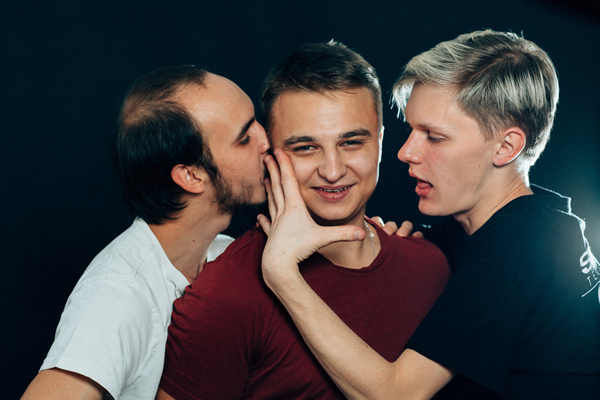
As gay men, we’ve been through a lot.
For so many years we were deep in the closet, fearful of being arrested, and threatened with pseudo-medical cures.
Then came the Stonewall uprising, the declassification of homosexuality as a psychiatric disorder, and the defeat of sodomy laws. And finally, the legalization of gay marriage.
Now—at least in some parts of the world — we’re free to live our lives exactly like everyone else. No one gets to tell us how to live, whom to love, or what we can or can’t do in the bedroom. We alone call the shots.
Then again, maybe we’re not as free as we think. Ever wonder why so many of us open our relationships? Are we always really deciding for ourselves how we want to live?
Or are we sometimes on autopilot, blithely following expectations and norms of which we aren’t even aware, oblivious to the possible consequences?
Spring, 1987: Although I didn’t know it at the time, my own introduction to the world of gay relationships was following a script that countless gay men have lived.
Growing up in that era, there were no visible gay relationships, no role models. Astoundingly, a gay porn theater/bathhouse did advertise in the Washington Post, my hometown paper, when I was a kid. While this was titillating, I dreamed of something more traditional and soulful for my future than the anonymous encounters and orgies at which those ads hinted.
So when hunky, adorable Justin* asked me out after a meeting of the campus gay group and we started dating, I was over the moon. That is, until my friends Ben and Tom, an older gay couple, shot me right back down to earth when, one evening over dinner, they asked if Justin and I were “exclusive.”
Huh? What a question!
“Just wait,” Tom said knowingly, “Gay men never stay monogamous for long.”
More than 30 years have passed, and the world of gay male relationships remains pretty much the same. Working as a psychologist for the past 25 years, I’ve listened to hundreds of gay clients share their own versions of my long-ago dinner with Ben and Tom. “We just assumed we’d be monogamous, but then this older gay couple told us, ‘yeah, let’s see how long that lasts.’ So we decided to open up our relationship and start playing around.”
New generations have the possibility of proudly visible relationships and recently, marriage. And still, for many of us, open relationships are seen as the default choice in one form or another: “Monogamish.” Only when one partner is out-of-town. Never the same person twice. Only when both partners are present. No kissing. No intercourse. No falling in love. Never in the couple’s home. Never in the couple’s bed. Don’t ask, don’t tell. Disclose everything. Anything goes.
Examining our affinity for non-monogamy can be seen as judgmental or anti-gay, “sex-negative,” tantamount to suggesting that gay men should mimic a heterosexual model that is patriarchal, misogynist, oppressive — and maybe not even really workable for straight people. Questioning our penchant for casual sex while we are coupled is also seen as a challenge to the inspirational (to some) narrative that gay men, free of the constraints of history and tradition, are constructing a fresh, vibrant model of relationships that decouples the unnecessary, pesky, and troublesome bond between emotional fidelity and sexual exclusivity.
But we do not honor our diversity if we expect that any of us should choose (or not choose) any particular role or path. After all, gay men are just as multidimensional, complex, and unique as other men.
And while an open relationship may be the best relationship for some couples to have, successfully being in one requires capabilities that many of us do not possess. Simply being a gay man certainly does not automatically provide skills such as:
The solidity of self to be trusting and generous
The ability to sense how far boundaries can be pushed without doing too much damage
The capacity to transcend feelings of jealousy and pain
The strength of character not to objectify or idealize outside sex partners.
Yes, open relationships can be as close, loving, and committed as monogamous relationships, which of course have their own difficulties. But even when conducted with thought, caution, and care, they can easily result in hurt and feelings of betrayal.
Moreover, open relationships are often designed to keep important experiences secret or unspoken between partners. Clients will tell me they do not want to know exactly what their partner is doing with other men, preferring to maintain a fantasy (or delusion) that certain lines will not be crossed. As a result, the ways in which we structure our open relationships can easily interfere with intimacy—knowing, and being known by our partners.
Consequently, we gay men often struggle to form solid, mutually respectful attachments that include both emotional and physical connection. Might any of these scenarios be familiar to you?
Jim and Rob came in to see me after a disastrous cruise with eight of their friends. Although it had not been their plan, between them they had ended up separately having sex with all eight. This had broken several of their “rules,” although as Jim pointed out, the rules were unclear because they often made them up to suit whatever they wanted to do, or not allow each other to do. Each partner’s ongoing anger over how his partner was hurting him by ignoring admittedly ad-hoc sexual boundaries meant that Jim and Rob hadn’t had sex with each other in two years.
Another couple I work with, Frank and Scott, have had an open relationship from the start. When they met, Frank felt strongly that monogamy had no relevance to him as a gay man. Though Scott wanted a sexually exclusive relationship, he somewhat reluctantly went along with Frank’s wishes because he wanted to be with Frank. In recent years the two have become near-constant users of hookup apps, and recently Scott met a younger man on Scruff with whom he has “great chemistry.” Now, to Frank’s dismay, Scott is dating Todd.
Carlos and Greg came to see me after Carlos discovered that Greg was hooking up numerous times a month. Although they had a “don’t-ask-don’t-tell” agreement and both assumed the other was occasionally having sex with other men, Greg’s behavior was far more frequent than Carlos had imagined or wanted to accept in his marriage. Greg was steadfast in his conviction that because he was following their rules, his hookups could not be negatively impacting his relationship with Carlos.
Beyond the hurt, enmity, reduced commitment, lack of connection, and distance they experience, men in these situations often tell me that their relationships and their lives have become overwhelmed by their pursuit of sex.
Another potential drawback to an open relationship: Yes, multiple partners are an easy (and fun) fix for sexual boredom. But when hot times can be easily found with others, we may feel little incentive to put sustained energy into keeping sex with our partners interesting. My educated guess: This is why many gay couples in open relationships have little or no sex with each other, just as a twosome.
Finally, it is troubling how easily, in our open relationship/hookup culture, we objectify those we have sex with and see other men as disposable, replaceable bodies. Treating others and being treated in this manner does not advance our respectfully relating to each other, nor does it benefit our self-esteem as men and as gay men.
What is influencing these behaviors?
Gay men lean toward non-monogamy for many interconnected reasons.
Men (stereotype acknowledged) often enjoy pursuing and having no-strings sex, so gay men readily find willing partners. Open relationships, seemingly fun and unconstrained, offering a stream of new partners to reduce the monotony of an ongoing relationship, can be intrinsically alluring. Gay men’s sexual connections have historically not been governed by societal rules, so we’ve been able to do pretty much whatever we want, as long as we’ve flown way under the radar.
And, open relationships are what we predominantly see around us as the relationship model for gay men, for the reasons noted above and also in large part due to the influence of gay history and gay culture.
For a deeper understanding of this last point, let’s take a whirlwind tour though gay male history in the Western world (much of which overlaps with lesbian herstory). Ancient, recent, forgotten, familiar, all of it is impacting our lives today.
Since at least the fourth century C.E., as Christianity gained influence, homosexual behavior was illegal in Europe, often punishable by death, and European settlers brought these laws with them to what became the United States. Some periods were relatively more tolerant, others less so. France became the first Western nation to decriminalize homosexuality after the 1791 Revolution, but harsh laws remained and were enforced throughout the Western world well into the 20th century. (And at present, 78 countries still have laws prohibiting homosexual behavior; punishments in some include the death penalty.)
Following World War II, America’s McCarthy “Red Scare” of the 1950s was accompanied by a campaign against the “Lavender Menace,” resulting in hundreds of homosexual government employees being fired. The anti-gay environment in the United States, similar to that in other Western countries, included FBI tracking of suspected homosexuals; the postal service monitoring mail for “obscene” materials including mailings from early gay rights organizations; prison terms for homosexual acts between consenting adults; and nightmarish “treatments” for homosexuality including chemical castration. Obviously, under conditions such as these, gay men had a difficult time congregating openly, meeting each other, or forming relationships. Many gay men lived fearful lives of isolation and furtive sexual encounters.
To get a chilling sense of what it was like to live as a gay man in this era, view William E. Jones’s “Tearoom” on the Internet. The film presents actual surveillance footage from a police sting operation of men meeting for sex in an Ohio restroom in 1962. The men’s fear is palpable, and the absence of affection or connection between them is heartbreaking.
While in 1967 parts of the United Kingdom decriminalized homosexuality, 1969 is known as the start of the modern gay rights movement because in June of that year, patrons of the Stonewall Bar in New York City fiercely fought back against a routine police raid. Following Stonewall, we began to congregate and organize openly, to throw off the cloak of shame, and to fight against third-class status. (In 29 of the United States it remained legal to fire someone simply for being gay until the June Supreme Court ruling in the Bostock case. The scope of that ruling is still being debated.)
During the 1970s, with sexual liberation coming on the heels of the civil rights era, the gay rights movement gained momentum. The American Psychiatric Association declassified homosexuality as a mental disorder in 1973. We became more visible, and gay culture—bookstores, bars, political organizations, and sex clubs—flourished as gay men rejected living in fear and openly celebrated their sexuality.
But by the late 1970s, HIV was silently making its way into the gay community. As men began to fall sick and die in staggering numbers early in the 1980s, anti-gay sentiment again exploded, and we began to equate our own sexuality with death. Yet the AIDS epidemic ultimately led our community to coalesce and strengthen, organizing to care for our ill and to fight for effective treatment, leading to greater visibility and acceptance, and providing some of the organizational groundwork for the equal rights battles that continue today.
History influences culture, and both our history and culture influence who we become, and how we lead our erotic and intimate lives. Modern gay culture developed in an environment of justified fear.
Often, the only possibility for us to meet for any sort of intimate encounter was through hookups and anonymous encounters. When connecting, we had to keep one eye over our shoulders, scanning for danger (this can literally be seen in Tearoom). Can such connections really be termed intimate?
For most of us, the days of outright surveillance are over. But the patterns of interacting that developed over many years have been passed down through the generations and still influence us in the present, even those of us who don’t face losing our jobs, family support, freedom, or lives if our sexual orientation is discovered. The longstanding need to hide, scan, and be vigilant has helped shape a culture of gay male interaction that— even when we are partnered — often centers on brief encounters, putting greater emphasis on sexual connection than on knowing and being known as multidimensional physical and emotional beings.
At the opposite end of the spectrum: The era of exuberant sexual liberation that followed Stonewall. In part as a reaction to our identity having been badly stigmatized and gay sex having been literally forbidden, both pre-Stonewall and to some degree in the era of AIDS and safer-sex campaigns, gay male culture has leaned toward placing strong emphasis on sex and hooking up. As a result, we often get the message that to be a successful gay man, we should be sexually desirable, open to sex, and have frequent conquests.
Other related factors that can contribute to our so easily leaning away from monogamy and toward multiple partners include:
The stigma around being gay denies many of us opportunities to date and romance early in life. Instead, the experiences of growing up gay, having to hide, and having difficulty discerning who might be a willing partner often lead us to have our first experiences in anonymity and shame, learning how to be sexual apart from and before we learn how to be close. As a result, we’re likely to have a hard time connecting sex and emotional intimacy. Moreover, our early experiences can set our arousal templates to be most aroused by secrecy, risk, anonymity, and being a sexual outlaw.
Internalized homo-negativity from growing up in a culture that has stigmatized homosexuality and gay relationships may lead us to absorb the idea that our relationships, and gay men generally, are “less than.” Consequently, we may think that we, our significant others, our relationships, and our sex partners are unworthy of honor and respect; and we may easily behave in ways that reflect these beliefs, pursuing pleasure without considering the possible costs to what we say we hold dear. And we may not even realize we hold these beliefs.
As gay men, we are likely to have grown up feeling defective and hiding our true selves from our closest family and friends, fearing rejection. When children and young people don’t get a sense that they are loved for whom they really are, and instead grow up seeing themselves as damaged, it’s difficult to develop a positive sense of self-worth. Many of us are still seeking to heal this wound through our ongoing pursuit of sex and the companion feeling of being desired by another man, unaware of what is driving this pursuit.
Alcohol and other substance abuse are entrenched in gay culture, in great part as a means of soothing the isolation, distress, anxiety, and depression that many of us experience from living in an often-hostile world. Clients routinely tell me they are in a chemically altered state when they make decisions to engage in extracurricular sexual interactions that threaten or damage their primary relationships.
One more key factor, true for all relationships: While closeness can feel good, being close also means being vulnerable, which is scary. Open relationships can be a way for us to keep some distance from each other in an attempt to keep ourselves safer.
I became a psychologist at a time when gay relationships weren’t getting much societal support, with the goal of helping gay couples thrive despite a deck stacked heavily against us. Over the years, I’ve learned that some of the most important work I can do with gay male clients is to help them be more thoughtful about their choices, so that they can better develop stronger, more nurturing, more loving relationships.
We gay men often keep our eyes closed to the ways that we may be damaging our relationships through some of our most commonplace, accepted, and ingrained behaviors. Obviously, it can be painful to acknowledge that we may be harming ourselves through seemingly fun, innocuous choices, or to acknowledge the possible downsides of our ubiquitous open relationships.
Nevertheless, there is great value for each of us in figuring out, as individuals, what it means to live in a way that we respect; in holding our behavior up to our own standards, and only our own standards; and in clarifying how we want to live life even when there is pressure, from the outside world and from other gay men, to live differently.
Pressure from other gay men? That’s right.
On first thought one might think that we gay men would have no trouble standing up to others’ expectations. Certainly it’s true that openly acknowledging we are gay despite societal judgment and pressure to “be” heterosexual demonstrates a strong ability to be true to ourselves, and to manage our anxiety in the face of tough challenges.
But beyond the expectations of society-at-large are the expectations of gay culture about what it means to be a successful gay man. Here is where many of us can get wobbly.
Not finding complete acceptance in the larger world, we have the hope that by coming out, we will finally feel a sense of really belonging somewhere. If this means behaving in the ways that peers do, taking on what we perceive to be the values of our community in order to fit in, many of us are willing to ignore our own feelings, and possibly our souls, so as to not feel excluded yet again.
Jim and Rob, the couple who had sex with all their friends on their cruise, are sitting in my office, with my dog Aviv snoozing at their feet. After some consideration, they had decided to stop having sex with other men for a while, to see if this would help them to feel closer and re-start their sex life with each other. The rancor had decreased and they reported enjoying having sex together again.
Their news: Jim has decided to enroll in a graduate program on the other side of the country, and they are discussing how this will affect their sex life.
“Of course we’re going to have to make some allowances for this,” Jim says.
I look at him quizzically.
“I mean, we might not see each other for a month or two at a time. So we need to have an agreement that we’ll have sex with other guys.”
Rob nods in agreement.
I ask them how they each anticipate the impact of both again having sex with others. They respond with shrugs.
“You know, our friends Bill and Dave—Bill has been working in Argentina for the last two years and they only see each other every three or four months. They’re definitely hooking up with other guys,” Jim notes.
“I mean, what else would we do?” adds Rob. “Not have sex for eight weeks?”
If I didn’t regularly have similar conversations with other coupled gay clients, I would be stunned that neither man is stopping to consider his own feelings about what it would mean to resume an open relationship. Both are focusing solely on their perceived need to have sex regularly, and on the notion that this is simply how gay couples should operate.
So much of gay history, culture, and relational development are shaping this moment.
When working with a couple like Jim and Rob, I do my best not to accept much as “simply a given.” Here are the questions that I wonder about with them: What have your hopes been for couplehood, and how is reality lining up with those hopes? How have you made your choices? How is your relationship working for you? What is most important to you?
As with Jim and Rob, I often find that clients haven’t considered these questions much. “It’s what our friends do” is the most frequent answer for how they have made the choice to have an open relationship. Many times it seems to me as if there’s a fog around these men’s thinking about their relationships.
I don’t want to contribute to the fog by colluding with them to believe that the particular heartbreaks that can come with carelessly conducted open relationships are unavoidable; that our relationships are not in fact fragile; or that we gay men must establish our relationships along certain lines simply because that is how it is “usually done.”
And when I challenge these clients to go deeper than stating that they are just doing what everyone else does? “Yes, it’s a struggle” is the answer I usually get. “It is painful when my husband doesn’t come home till the next morning.” And then: “But isn’t this how gay men have relationships? It’s what everyone around me is doing.”
These are the poignant and troubling words I hear again and again, echoing what I was told by my friends back in 1987.
Given the numerous interrelated factors that shape our choices in the realm of sex, it is difficult to envision gay men making significant changes in how we operate, especially as committed relationships are—at present—becoming less popular among younger people of all sexual orientations.
But when we look at the arc of gay existence over the past 50 years, from the shadows to the margins of tolerance to marriage equality, it is clear that surprising and dramatic shifts are possible.
So I am hopeful that we gay men can get off autopilot and become more aware of the factors contributing to how we construct and manage our relationships. And I am hopeful that this awareness can go a long way toward our making ever more thoughtful choices, respectful of ourselves and our partners, that help us to build stronger, closer, and more rewarding relationships.
(All names and identifying information changed in this article.)
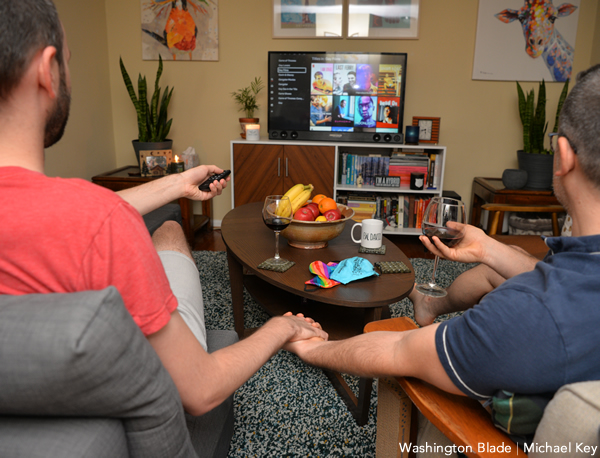
a&e features
Local, last-minute holiday gift ideas
Celebrate the season while supporting area businesses
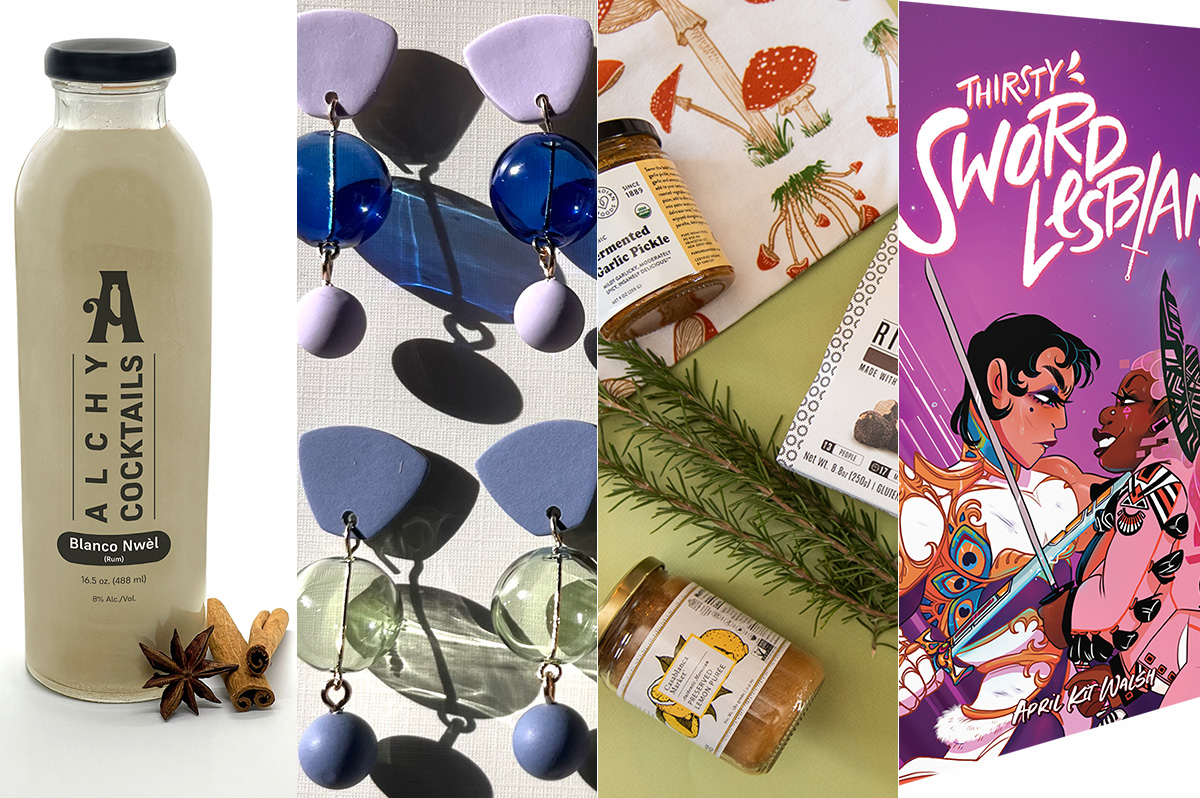
The DowntownDC Holiday Market is bustling. Union Station is decked out with its annual Christmas tree. Washingtonians have wrapped their houses and apartment balconies with festive lights and holiday decorations. The holiday season is here. And with stockings to fill and empty space under the tree, Washington’s local shops and artists have plenty to offer.
Show your LGBTQ and D.C. pride with the Washington Blade’s annual holiday gift guide.
To embrace the holiday buzz: The Blanco Nwèl cocktail from Alchy Cocktails. This Caribbean eggnog is one of Alchy Cocktail’s seasonal holiday cocktails. The flavor profile is similar to coquito, a traditional Puerto Rican Christmas drink with a coconut base. As a queer and Caribbean-owned business, Alchy Cocktails has been based out of Washington since 2021. Blanco Nwèl is available in both cocktail ($24) and mocktail ($12) online and at a variety of holiday markets, including the Tingey Plaza Holiday Market, the Flea Market at Eastern Market, Union Station’s Main Hall Holiday Market, and more. ($24)
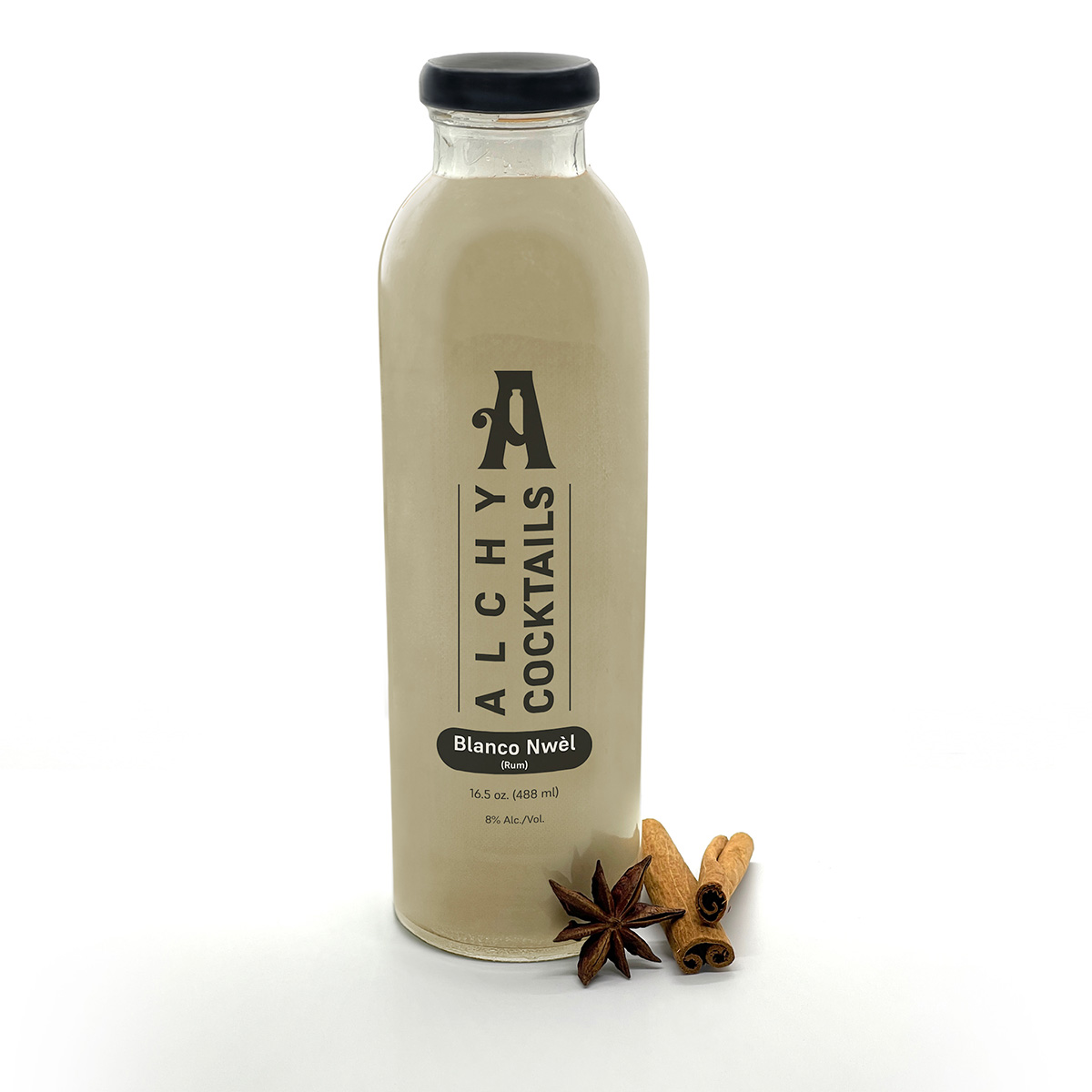
A spicy bite: Gordy’s Cajun Okra from Salt and Sundry. These spicy, tangy pickles pull on Southern Cajun-style flavors, packing a punch with paprika, cayenne, and more. Gordy’s is an LGBTQ-owned and Washington-based brand, making this gift an opportunity to support a local LGBTQ business straight from the jar. This pantry staple is available on Salt & Sundry’s website and at its locations in Union Market, Logan Circle, and its Georgetown holiday pop-up store. ($14)
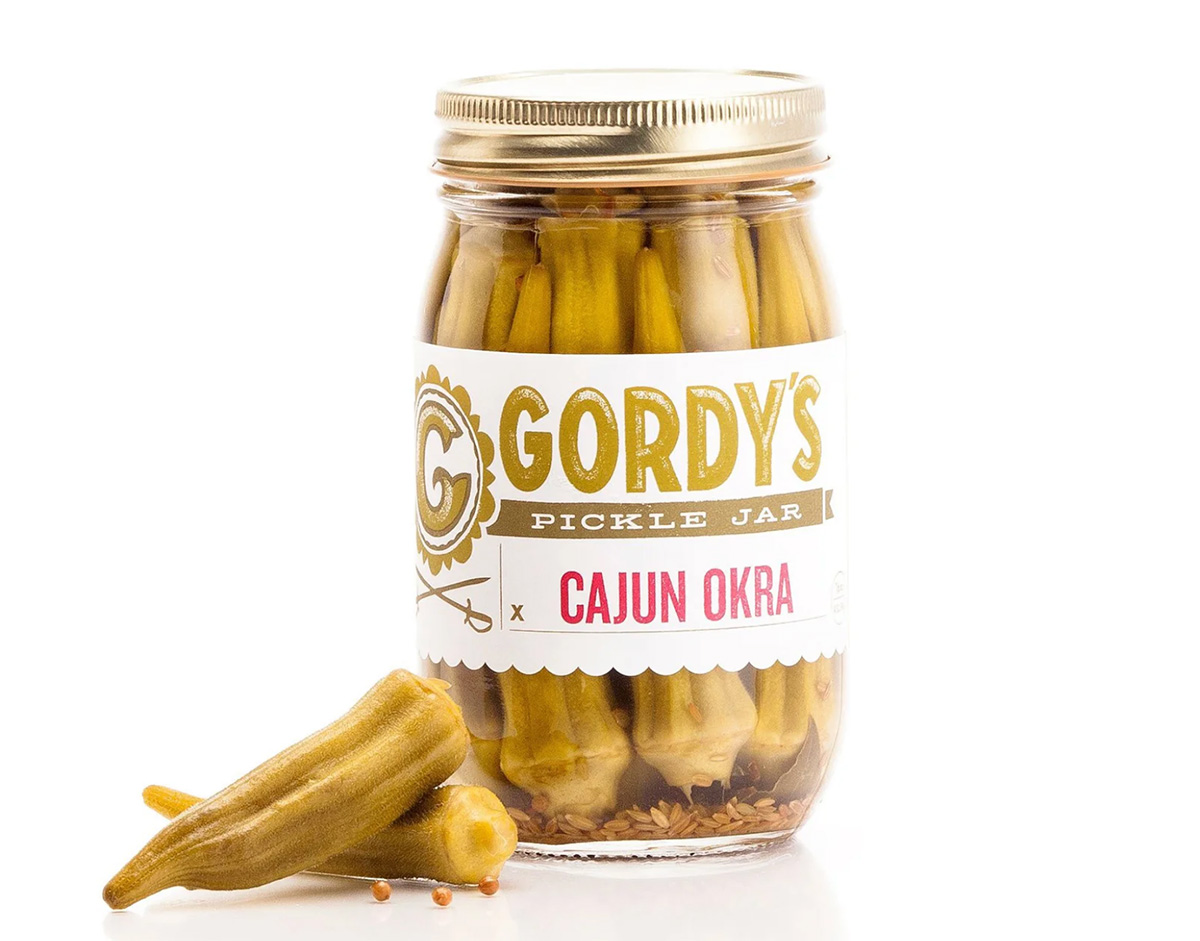
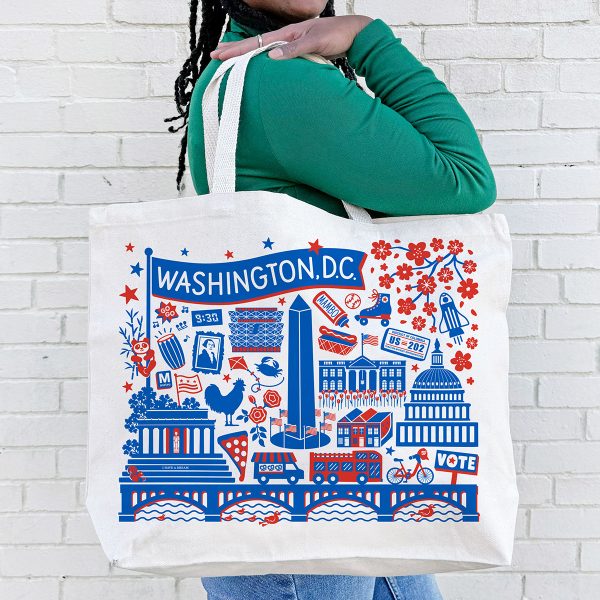
To celebrate Washington pride: The DC Landmark Tote Bag from The Neighborgoods. Native Washingtonians, visitors, friends and family alike will find something to love about this Washington-themed tote bag. Food trucks, the 9:30 Club, the Metro logo and pandas from the National Zoo are just some of the city’s landmarks depicted across the tote in a red, white, and blue color palette. The tote is a part of the DC Landmarks collection, which donates 10 percent of its sales to the American Civil Liberties Union. The Neighborgoods itself is a local, woman-owned business built out of a passion for screen-printing in 2013. The 100 percent cotton canvas tote is for sale online or at the DowntownDC Holiday Market. ($22)
To give friends and family their flowers: The Flowers Bandana from All Very Goods. This 100 percent cotton bandana was designed in Washington and hand printed in India. Its uniqueness comes in being covered with the faces of Black women, representing a “love letter to all women but especially Black women,” according to All Very Goods. The Black woman-owned and operated business, based out of Northwest Washington, has a mission to celebrate diversity and representation through its products. The bandana intends to give Black women their “flowers.” The Flowers bandana is available for purchase online. ($24)
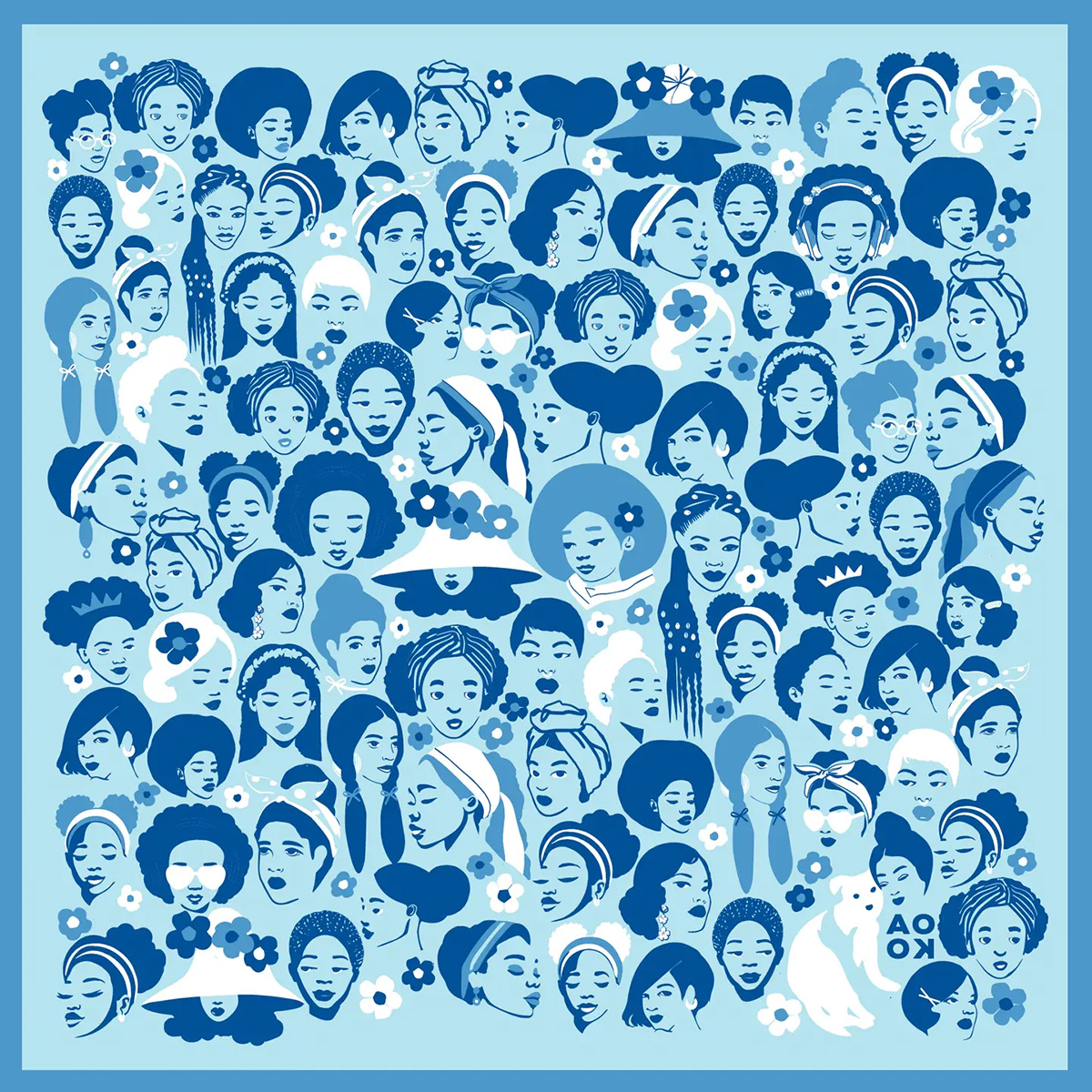
To unlock culinary creativity: The Curious Chef Gift Collection from Each Peach Market. This customizable collection of kitchen oddities — ranging from tinned fish to chili oil — is a quirky gift for the most inventive chefs. The collection is available in a Standard Santa, Extra Goodies and Super Holiday Size for up to $165. The Washington-based market, founded in 2013, permits customers to make the collection special by specifying what unique ingredients are packaged, including products made by local or LGBTQ brands. Each Peach Market offers assembly and pick up in-person at its Mount Pleasant shop and also offers local delivery and nationwide shipping via its website. ($85)
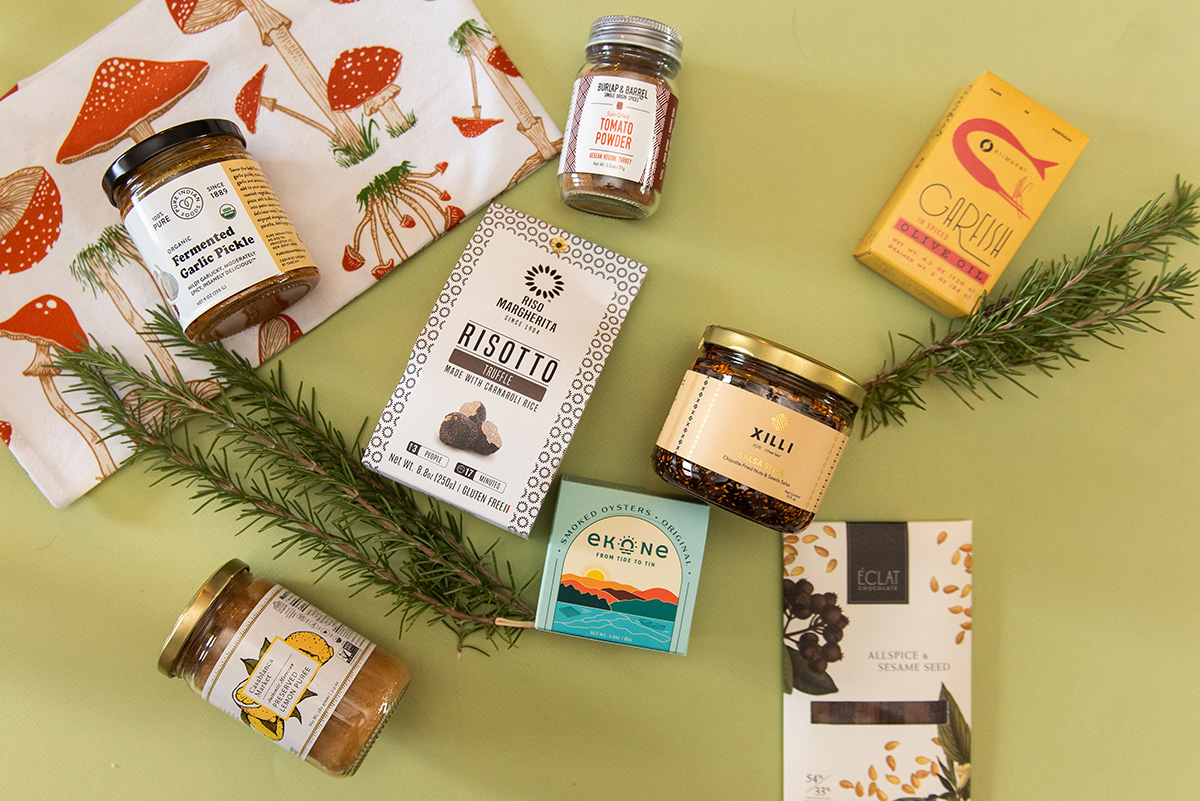
To give a touch of sweetness: The DC Landmark Chocolate Covered Oreo Holiday Cookies from Capital Candy Jar. Wrapped in a festive red bow, this box of nine cookies embraces love for Washington and the holiday season in one. Among the dark and milk chocolate covered cookies are images of the U.S. Capitol, the White House, the Lincoln Memorial, the Jefferson Memorial and festive hollies. The treat, packaged in a Hill East facility just a few blocks from the Capitol, is available for purchase online and at the DowntownDC Holiday Market. ($23.95)
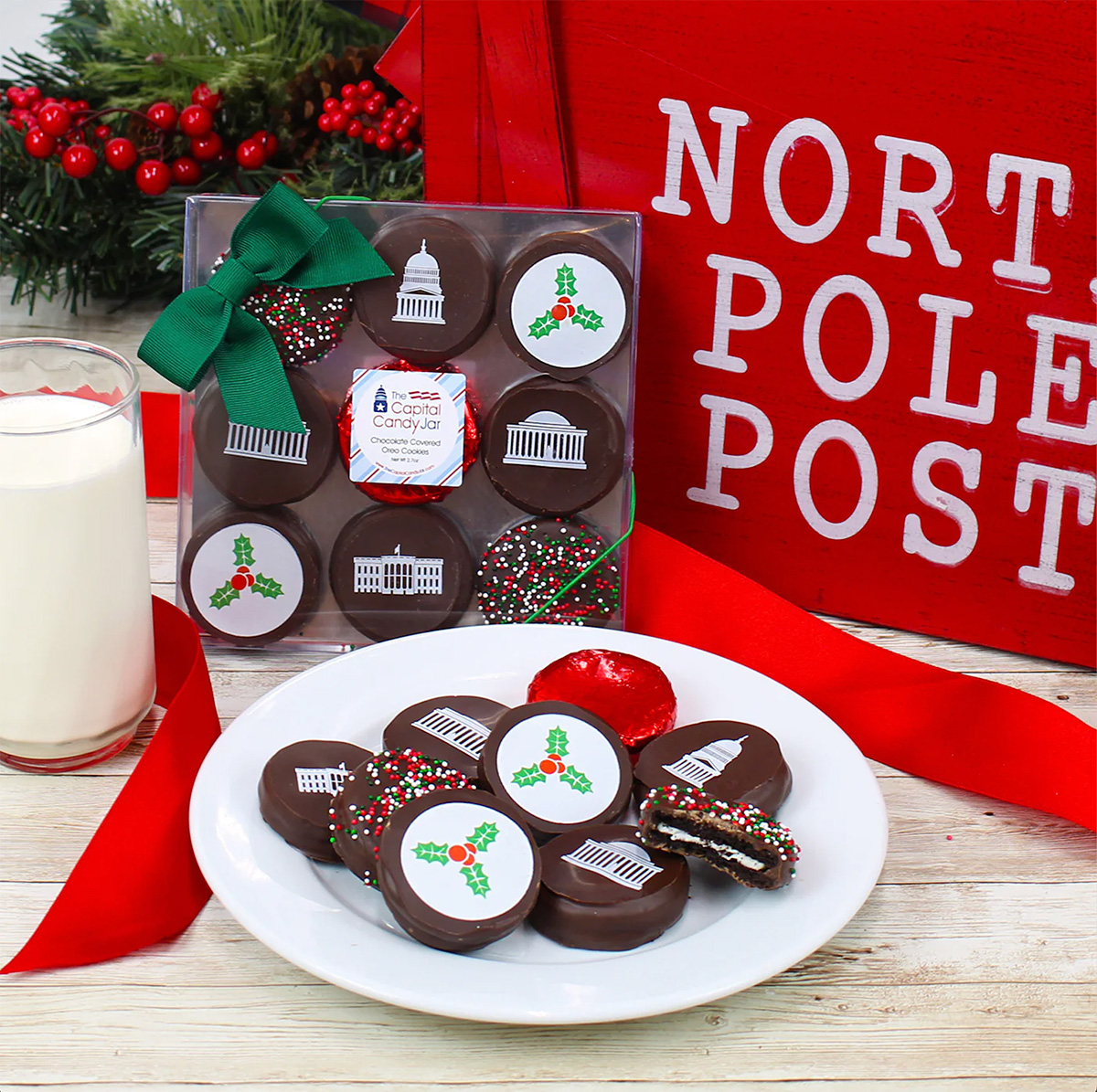
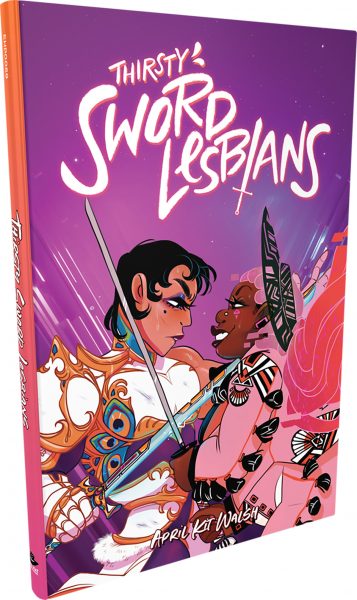
To celebrate queer gaming: Thirsty Sword Lesbians from Labyrinth Games & Puzzles. This roleplaying game embraces lesbian culture by unlocking a world of swords, romance, and battle. Ideal for group settings, the book presents a system of world building and character identities that are best brought to life by creative minds. Labyrinth, which has been a local Washington business for more than 15 years, celebrates non-digital fun through games and puzzles that connect the community. This gift is offered online and at Labyrinth’s Capitol Hill location. ($29.99)
To make a bold statement: The “Resist” T-shirt from Propper Topper. This locally screen-printed black tee features the Washington flag designed within a raised fist, symbolizing both Washington pride, and political resistance. The shirt is made exclusively by Propper Topper, a local Washington business that evolved from a hat shop to a gift store since opening in 1990. The tri-blend unisex shirt is available both for pickup at Propper Topper’s Cathedral Heights location and shipping via the online site. ($32)
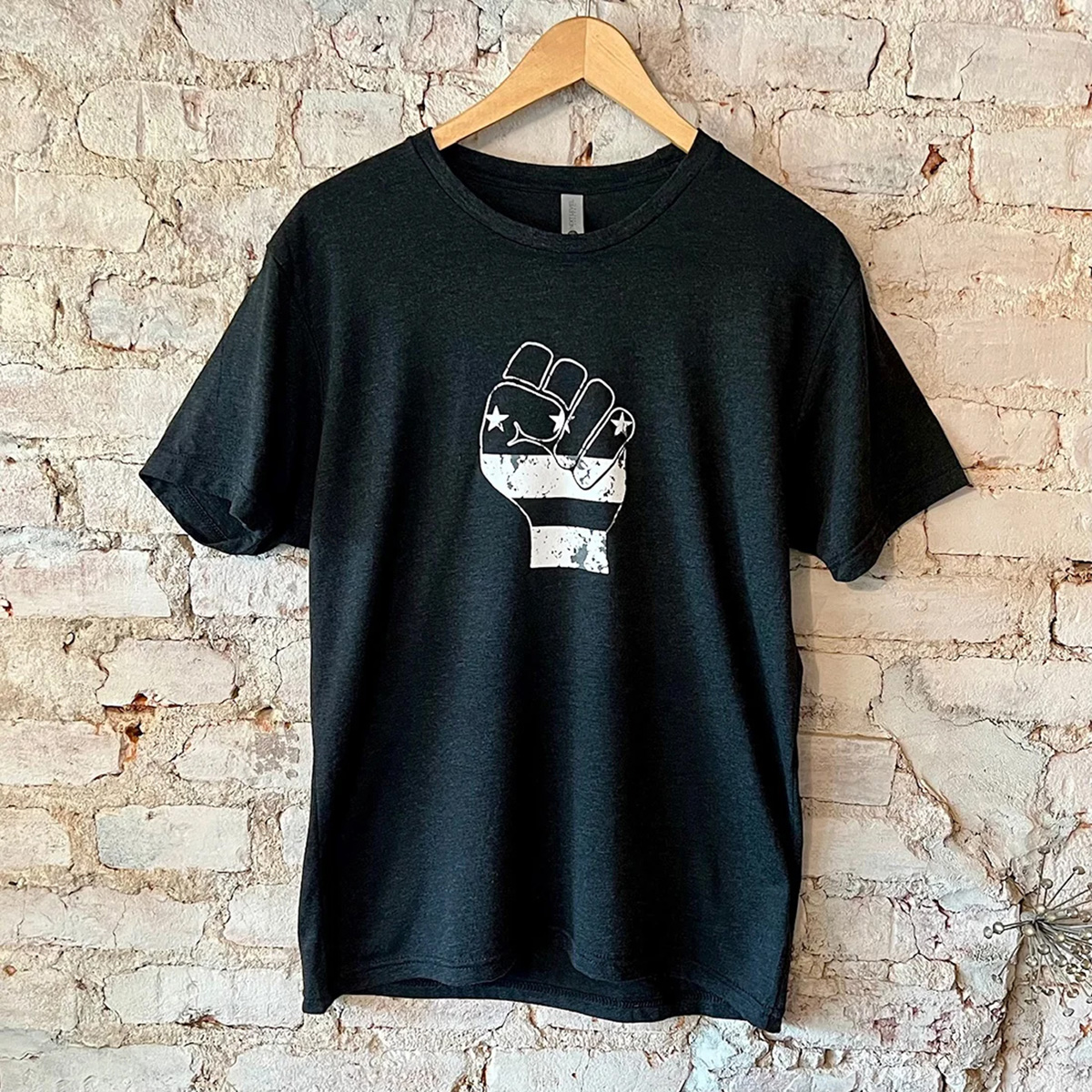
To keep it c(g)lassy: The Glass Ball earrings from Blue Moon Aquarius. Gifting can rarely go wrong when it comes to a new pair of earrings. The unique statement earrings — made of polymer clay, glass, and 18k gold plating over surgical steel — are hand cut, sanded and assembled in Washington, meaning each set is unique. Blue Moon Aquarius, a local brand, is known for its small batch jewelry and home decor designed with clay materials. Available in oxblood, hunter green, lavender, and bluestone color palettes, these earrings are available for purchase on Blue Moon Aquarius’ website and at the DowntownDC Holiday Market. ($48)
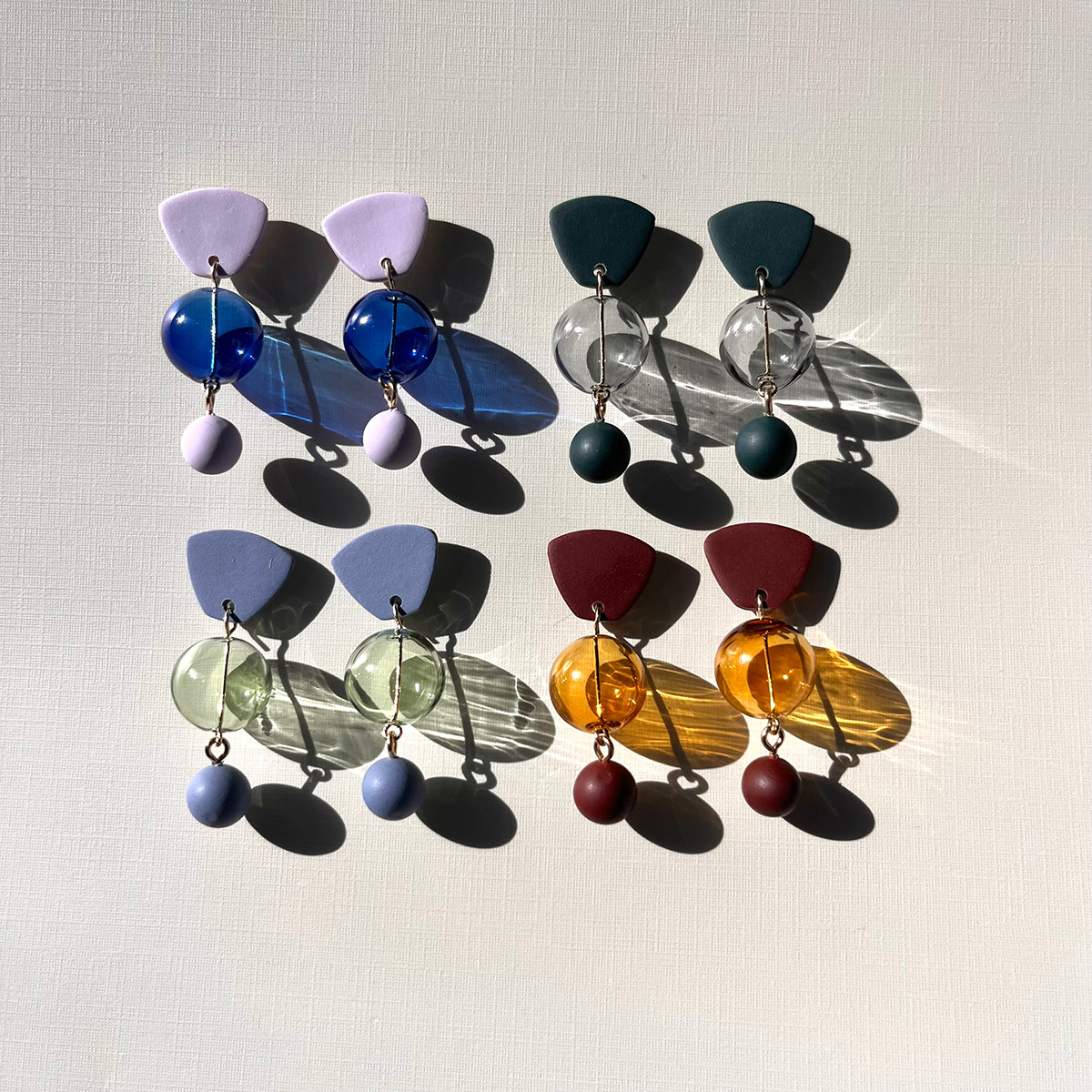
To elevate a holiday tea or charcuterie party: The Honey Flight: Tea Lover’s Selection from BannerBee. This local honey company presents the ideal gift to make cozying up with a cup of tea slightly more special. The Honey Flight contains three types of raw wildflower honey infused with fair trade Ugandan vanilla bean, chai spices, and locally sourced lemon thyme herb. The gift is also an opportunity to uplift a family company based in the Mid-Atlantic that offers all-natural, sustainable products. The flight is available online, at the DowntownDC Holiday Market or at the Arlington Courthouse and Dupont Farmers’ Markets. ($36)
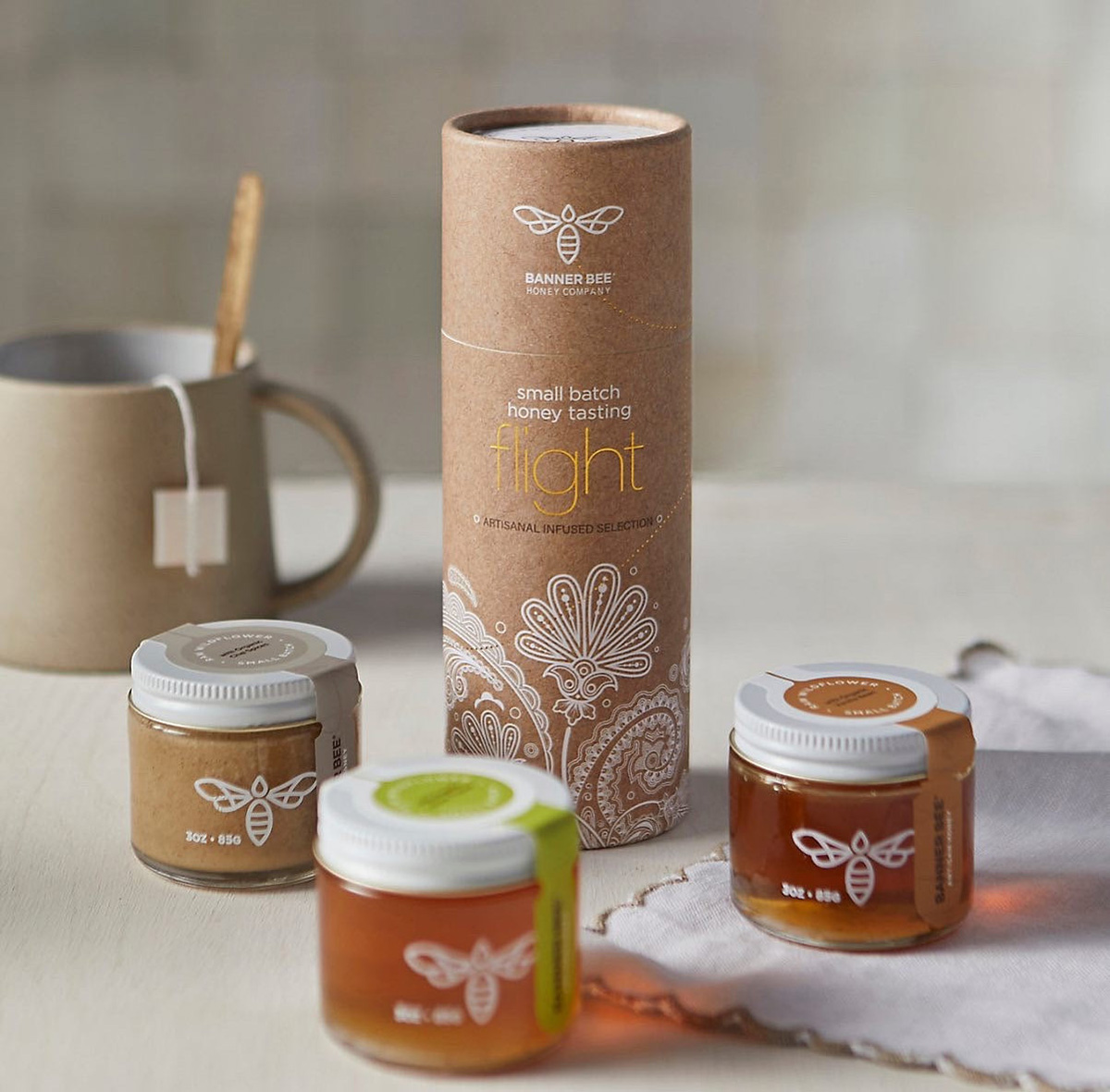
For Baltimore shoppers: If you’re in Charm City, don’t miss Balston Mercantile, opened by a gay couple in June. Their gorgeous shop in the Hampden neighborhood offers an array of unique, upscale finds, from barware and artwork to cookbooks and home decor and more. (849 W. 36th St.)
a&e features
Have yourself a merry John Waters Christmas
Annual holiday show returns to Alexandria and Baltimore
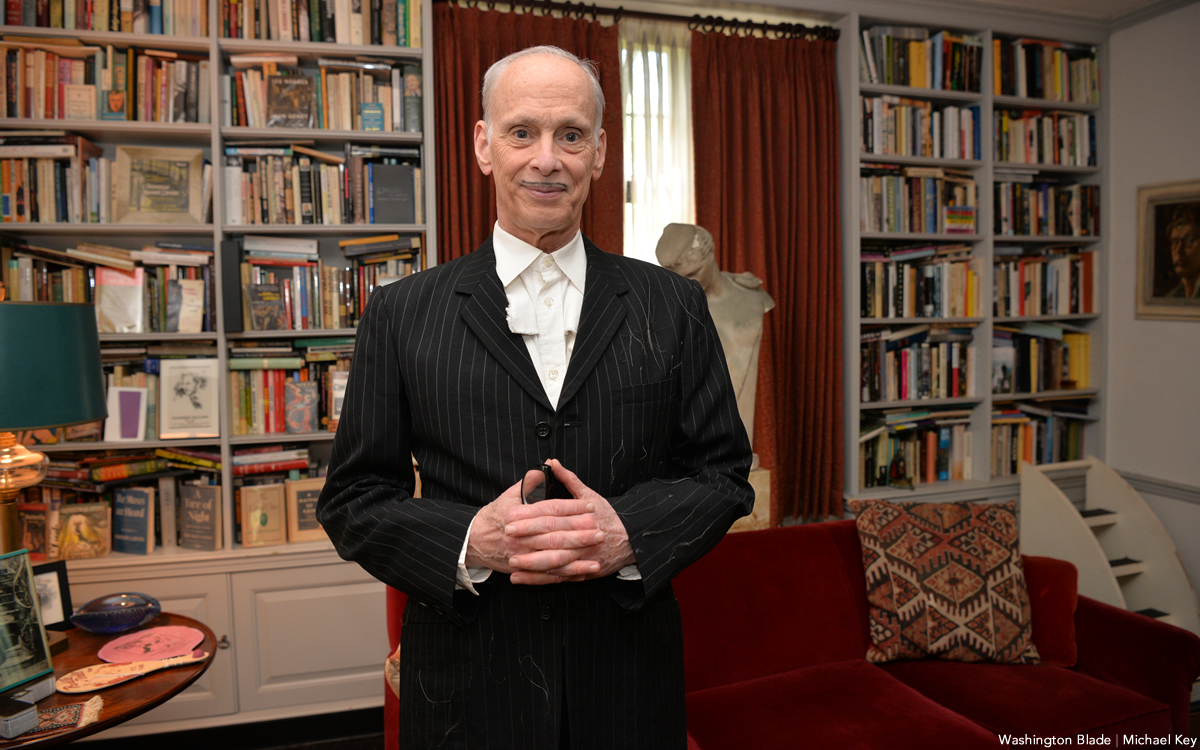
When it comes to iconic Christmas scenes in movies, none can top the tree-toppling tantrum thrown by cha-cha heels-deprived Dawn Davenport in John Waters’s fifth full-length feature “Female Trouble” from 1974. Therefore, it’s not surprising that Waters continues to make art out of Christmas, performing his spoken word Christmas tour in cities across the country. Waters has even more reason to celebrate with the release of his new red vinyl 7” single, a cover of Little Cindy’s “Happy Birthday Jesus (A Child’s Prayer)” on the A-side, and “A Pig Latin Visit From St. Nicholas” on the B-side. If you’re still looking for unique Christmas gifts, consider this record. As always, John was kind enough to make time for an interview in advance of his tour dates.
BLADE: John, in preparation for this interview with you, I went back and listened to Little Cindy’s original rendition of “Happy Birthday Jesus (A Child’s Prayer)” on your “A John Waters Christmas” CD.
JOHN WATERS: One thing I did, if you notice, I make the same stumble in my recording that she did in the original.
BLADE: It sounded to me like she got choked up.
WATERS: No, I think she just stumbles over a word, so I stumbled over the same word. It’s appropriation, insanely.
BLADE: Is this a song you first became aware of in your youth or when you were an adult?
WATERS: When I was doing the Christmas album, I had this friend named Larry Benicewicz. He was kind of my idea man with music. He knew every single old record. I would say to him, “Weird Christmas songs,” when we were doing a soundtrack, or a song about bears, or a song about this, and he would give me all these tapes. It was one of the ones he played for me. A lot of the songs I put in my movies and on my records, I did know as a kid. I did not know this one, but I immediately embraced it. I don’t think it’s campy. I think it really is spiritual in a weird way. My doing it makes it a novelty record. I am really for novelty records, and there aren’t any anymore. Why was there not a COVID novelty record? That’s insane. The dance “The Bug” that’s on the “Hairspray” soundtrack would be perfect for COVID.
BLADE: The thing that struck me was that for a Christmas song in the voice of a child, a kind of death pall hangs over it, with lines like, “If I was good you’d let me live with you” and “they nailed you to the cross, they wanted you to die.”
WATERS: All of it! When I see children at midnight mass kneeling in front of a nude man nailed to a cross, I feel like I’m at The Eagle! It is S&M, it’s creepy. I took the same cover (photo) from her record to parody and put my face on it. The same thing I did with The Singing Dogs last year when I covered (their version of) “Jingle Bells.” I’m really into novelty records. I love them and I’m trying to bring them back. I don’t expect anybody to ever play these records. Even The Singing Dogs one said on it, “Please do not play this record” [laughs]. And the flipside, the Pig Latin version, is almost impossible to listen to.
BLADE: I’m so glad you mentioned that. “A Pig Latin Visit From St. Nicholas” reminded me of the lost art of speaking in Pig Latin. I also recall watching the PBS series “Zoom” as an adolescent and learning to speak “ubbi dubbi,” a distant relative of Pig Latin. Do you think that the time is right for a Pig Latin or ubbi dubbi revival?
WATERS: Here’s the thing, I never could pick up any language, except Pig Latin. I’ve been in every foreign country. Foreign countries have given me money to learn to speak the language. I can never do it! But Pig Latin…my parents and other parents in the ‘50s spoke Pig Latin so kids couldn’t understand what they were saying. Then my mother taught it to me, and I used it. The hardest take to shoot in “Pink Flamingos” was not eating the dog shit. It was when the cast skipped, in one take, saying “E-way, are-yay e-they ilthiest-fay eople-pay in-hay e-they ole-hay ide-way orld-way.” We’re the filthiest people in the whole wide world in Pig Latin. We had to do so many takes so they could do it once without screwing it up. In “Polyester,” Edith (Massey) answers the phone, “ello-hay.” I did a photo piece where it was all subtitled in Pig Latin. Like “osebud-Ray” (from “Citizen Kane”) or in “Streetcar,” “ella-Stay!” [Laughs] All the iconic dialogue translated into Pig Latin. My assistant who helped me do it, had never heard of Pig Latin. She really got good at it because she lived in many foreign countries and can pick up languages. But it’s not that easy to do it correctly and read it. Your computer will translate into Pig Latin.
BLADE: AI understands Pig Latin?
WATERS: I guess that’s AI. It wasn’t 100% right, but it was close. I can speak it if I look at it, but just do a bit at a time. It was a challenge that no one would possibly care about or want to do.
BLADE: I think you pulled it off very well.
WATERS: If you want people to leave on Christmas morning, you put it on. That’s how you get your guests to leave. It’s time to go.
BLADE: Ood-gay i-bay! How did your relationship with record label Sub Pop, which released 2021, 2022, 2024, and new 2025 holiday singles, come about?
WATERS: I believe the first thing I did for them was “Prayer to Pasolini.” They came to me through Ian Brennan. He’s won a couple Grammys for World Music, but he is also is one of my agents who does the Christmas tour and a lot of my shows, anything with music. He helped me arrange each one of the songs. He had a relationship with Sub Pop. It was perfect. My friends in Baltimore, (the band) Beach House, have had huge success.
BLADE: That’s right, they’re on Sub Pop!
WATERS: Yes! I’m happy to be on it. I’ve even been to the warehouse and posed for pictures like Jackie Suzanne used to do.
BLADE: Is there any chance that “A John Waters Christmas” might be reissued on vinyl by Sub Pop?
WATERS: No. It’s such a nightmare to get the rights and to renew them. You have to find the publisher and the writer, and they usually hate each other. It doesn’t matter if it’s obscure or famous, it’s hard to get. You have to make the deal. The singer doesn’t get anything unless they play it on the radio. It would be so complicated legally, and there would be such a [laughs] tiny audience for it. I hope it will come out again. The same thing with the one for Valentine’s Day. I had two of them that did quite well when they came out; “A Date With John Waters and “A John Waters Christmas.” The “John Waters Christmas” album is still the soundtrack that plays whenever I’m doing my spoken word Christmas show as people are entering the theater.
BLADE: Aside from your annual Christmas show tour, what else do you do for the holidays now, and are there any traditions that you’ve carried over from your family?
WATERS: Certainly! I have two sisters, my brother’s widow, and me, so there are four and we take turns each year to have the Christmas dinner. Mine was last year. An entire sit-down dinner. Mom’s China, the silverware, the entire full dinner. It’s pretty traditional. I don’t have a Christmas tree, but I do decorate the electric chair from “Female Trouble.” That is a tradition in my family. We do have Christmas decorations, but they’re usually weird ones that fans sent me. I have one with Divine knocking over the Christmas tree, and the Christmas tree lights up, all sorts of amazing things. There is definitely a tradition here that might be a little altered, but it is definitely a tradition. I used to have a giant party every year, but COVID ended that. I still wouldn’t want 200 people in my house breathing right now.
BLADE: I was looking at your tour schedule and wondered if there are any new cities in which you’ve never performed the John Waters Christmas show that have been added to this year’s schedule?
WATERS: I don’t think there’s a city in America in which I haven’t done one show! The only places I haven’t been to are Hawaii and Alaska. I could do it there, but it’s too long on a tour. I can’t think of a city I haven’t played in in America over the last 50 years. The Christmas show is completely different every year. It doesn’t matter if you saw it last year.

Some gifts scream practical, others whisper luxury, and a few flat-out blur the lines. From cocoa that feels ceremonial to a cologne that linger like a suggestive smirk, this year’s ultimate gift picks prove that thoughtful (and occasionally naughty) presents don’t have to be prosaic. Welcome to your holiday cheat sheet for festive tangibles that get noticed, remembered, and maybe even result in a peck of gratitude planted under the mistletoe. Consensually, of course.
Amber Glass Champagne Flutes
Pop the champs – but make it vintage. These tulip-shaped stunners in amber-tinted glass bring all the Gatsby vibes without the Jazz-age drama. Whether you’re toasting a milestone or celebrating a Tuesday, their seven-ounce capacities and hand-wash-only care make ‘em as practical as they are pretty. Pair with a thoughtful bottle of bubs and gift with a glittering wink. $18, NantucketLooms.com
Disaster Playbook by Here Comes the Apocalypse
Because the end of the world shouldn’t be a solo act, this spiral-bound guide is your step-by-step roadmap to surviving and thriving when everything else goes sideways, which might be sooner than you think. Packed with checklists, drills, and a healthy dose of humor, it’s like a survival manual written by your most prepared (and slightly snarky) friend. Whether you’re prepping for a zombie apocalypse or, more realistically, REVOLUTION!, this playbook’s got your back. $40, HereComesTheApocalypse.com
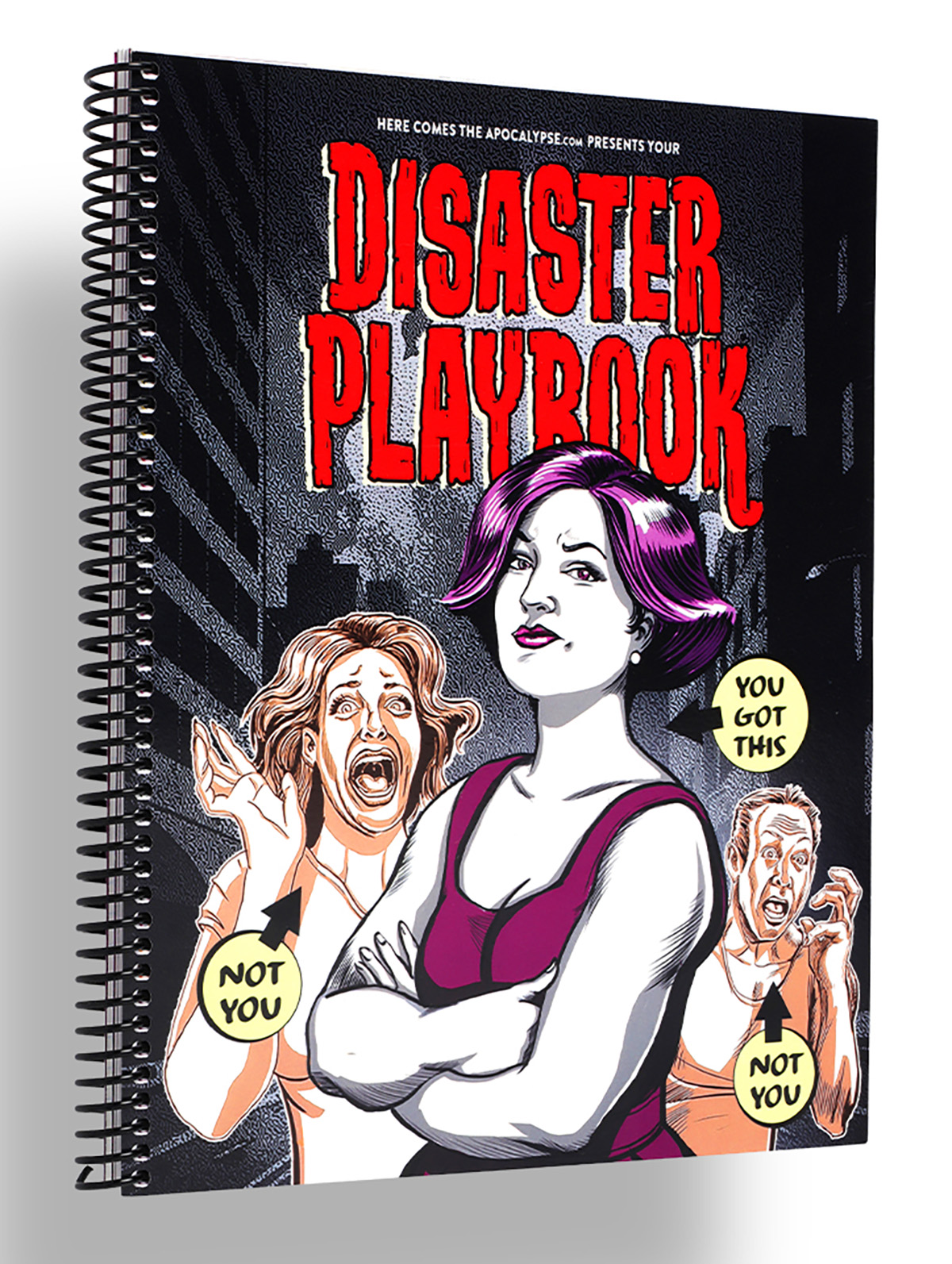
Wickless Vulva Candles
Bold, luxurious, and completely flame-free, CTOAN’s wickless candles melt from beneath on a warmer, releasing subtle, sophisticated fragrances, like sandalwood or lavender. The vulva-shaped wax adds a playful, provocative element to any space –perfect for a bedroom, living room, or anywhere you want elegance with an edge. A gift that celebrates form, intimacy and self-expression, no fire required. $39, CTOANCO.com
Villeroy & Boch Royal Classic Christmas Collection
Every meal is a mini celebration – with whimsy at every place setting – in Villeroy & Boch’s Royal Classic festive dinnerware collection that hits all the right notes. Made from premium German porcelain, it features nostalgic little toys, nutcrackers, and rocking horses in delicate relief, giving your holiday spread a playful but refined twist. Dishwasher- and microwave-safe, it’s luxe without the fuss. Gift a piece to a special someone, or start a collection they’ll use (and show off) for years to come. $22-$363, Villeroy-Boch.com
Greenworks Electric Lawnmower
You a ’hood queen who considers lawn care performance art – or just wants to rule the cul-de-sac in quiet, emission-free glory? Greenworks’ zero-turn electric mower has the muscle of a 24-horsepower gas engine but none of the fumes, drama or maintenance. Six 60V batteries and a 42-inch deck mean you can mow up to two-and-a-half acres on a single charge – then plug in, recharge, and ride again. It’s whisper-quiet, slope-ready, and smooth enough to make you wonder why you ever pushed anything besides your queer agenda. The perfect gift for the homeowner who loves sustainability, symmetry, and showing off their freshly striped yard like that fresh fade you get on Fridays. $5,000, GreenworksTools.com
Molekule Air Purifier
For the friend who treats their space like a sanctuary (or just can’t stand sneezes), the Molekule Air Pro is magic in motion. Covering up to 1,000 square feet, it doesn’t just capture allergens, VOCs, and smoke – it destroys them, leaving your air feeling luxury-clean. FDA-cleared as a Class II medical device, it’s serious science disguised as modern design. Gift it to your city-dwelling, pet-loving, candle-burning friend who likes their living room as pristine as their Instagram feed. $1,015, Molekule.com
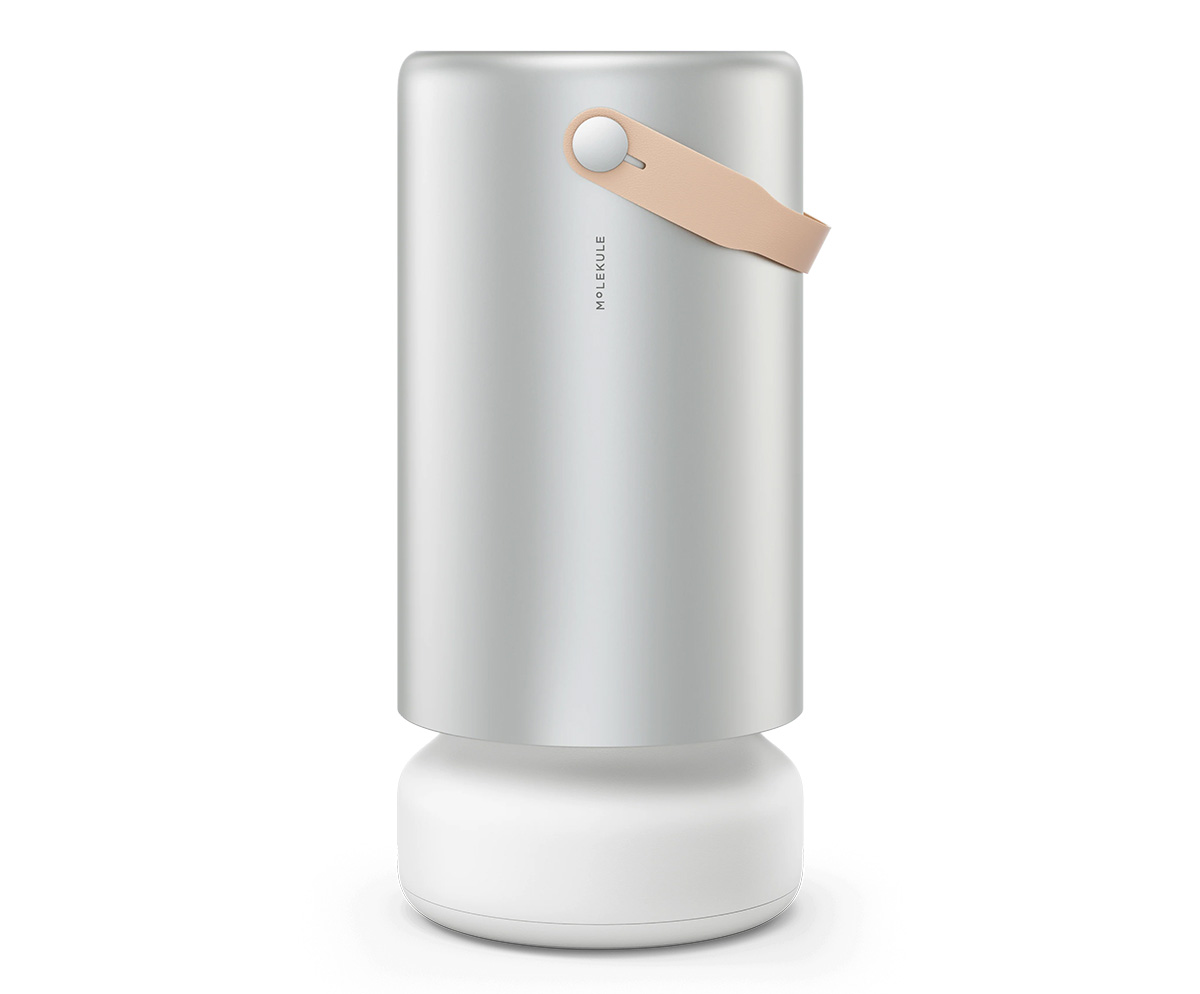
Cipriani Prosecco Gift Set
Effervescent with stone-fruit sweetness and a touch of Italian flair, the Cipriani Bellini & Prosecco gift set brings brunch-level glamour to any day of the week. The Bellini blends rich white-peach purée with sparkling wine, while the dry ’secco keeps things crisp and celebratory. Pop a bottle, pour a flute, and suddenly winter weeknights feel like a party – even with your pants off. $36, TotalWine.com
Woo(e)d Cologne
British GQ recently crowned Woo(e)d by ALTAIA the “Best Date Night Fragrance,” and honestly, they nailed it. Confident without being cocky – smoky gaïac and Atlas cedarwood grounds the room while supple leather and spicy cardamom do all the flirting – it’s a scent that lingers like good conversation and soft candlelight. Gift it to the one who always turns heads – or keep it for yourself and let them come to (and then on) you. $255, BeautyHabit.com
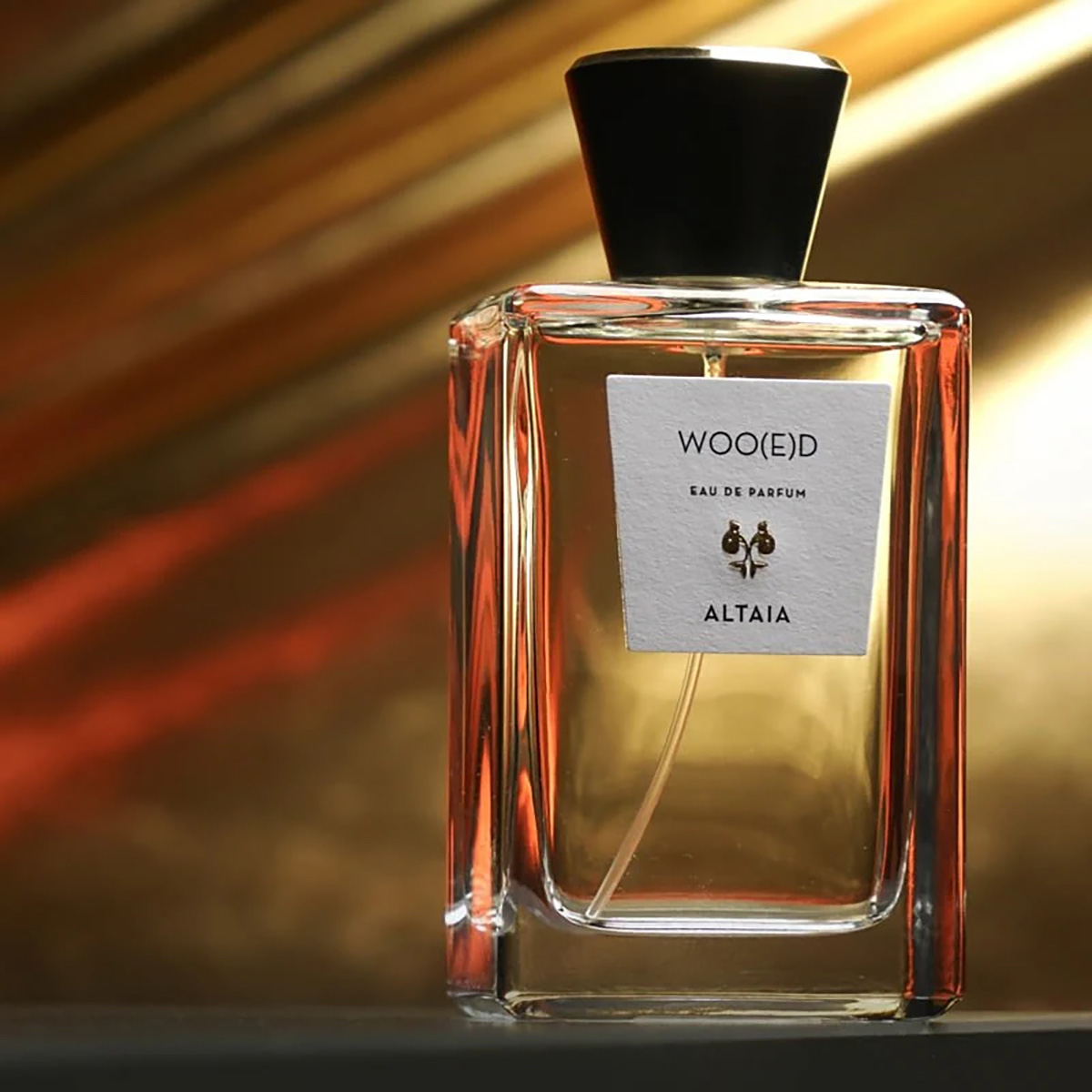
Lococo Cocoa Kit
Keep the run-of-the-mill mugs in the cabinet this Christmas and pull out Lococo’s handcrafted Oaxacan versions that demand you slow down and sip like it matters. Paired with a wooden scoop, rechargeable frother, and Lococo’s signature spice hot-chocolate blend (vegan, gluten-free, with adaptogenic mushrooms), this holiday kit turns Mexi-cocoa into a mini ritual you’ll look forward to. Perfect for anyone who loves a little indulgence with a side of ¡A huevo! energy.
Manta Sleep Mask
Total blackout, zero pressure on the eyes, and Bluetooth speakers built right into the straps, this ain’t your mama’s sleep mask — but it could be. The Manta SOUND sleep mask features C-shaped eye cups that block every hint of light while ultra-thin speakers deliver your favorite white noise, meditation, or late-night playlist straight to your ears. With 24-hour battery life, breathable fabric, and easy-to-adjust sound, it turns any bed (or airplane seat) into a five-star sleep suite. Perfect for anyone who treats shut-eye like an art form (or just wants to escape their roommate’s late-night bingin’ and/or bangin’). $159, MantaSleep.com

Shacklelock Necklace
Turn the industrial-chic vibe of a shackle into a sleek statement. Mi Tesoro’s platinum-plated stainless-steel necklace sits on an 18-inch wheat chain, featuring a shackle-style latch pendant that’s waterproof, tarnish-free, and totally fuss-les. Beyond style, it nods to a classic gesture in the queer leather community: replacing a traditional Master lock with something elegant to quietly signal belonging to someone special. Wear it solo for a minimalist edge or layer it like you mean it; either way this piece locks in both your look and your intentions. $90, MiTesoroJewelry.com
Parkside Flask Mojave Edition
Wine nights get a desert glow-up with Parkside’s limited-edition 750-milliliter all-in-one flask draped in sun-washed bronze and badland hues like sage, sand, and terracotta – with magnetic stemless tumblers that snap on for effortless shareability. It keeps your vino chilled for 24 hours, pours without drips (no tears for spilled rosé, please), and even lets you laser-engrave your own mantra or inside joke. Perfect for picnics, surprise rooftop clinks, or gifting to your favorite wine (or desert) rat. $149, HighCampFlasks.com

Mikey Rox is an award-winning journalist and LGBT lifestyle expert whose work has published in more than 100 outlets across the world. Connect with him on Instagram @mikeyroxtravels.
-

 Opinions5 days ago
Opinions5 days ago2026 elections will bring major changes to D.C. government
-

 Kazakhstan5 days ago
Kazakhstan5 days agoKazakh Senate approves anti-LGBTQ propaganda bill
-

 District of Columbia4 days ago
District of Columbia4 days agoNew queer bar Rush beset by troubles; liquor license suspended
-

 Letter-to-the-Editor5 days ago
Letter-to-the-Editor5 days agoCandidates should pledge to nominate LGBTQ judge to Supreme Court

